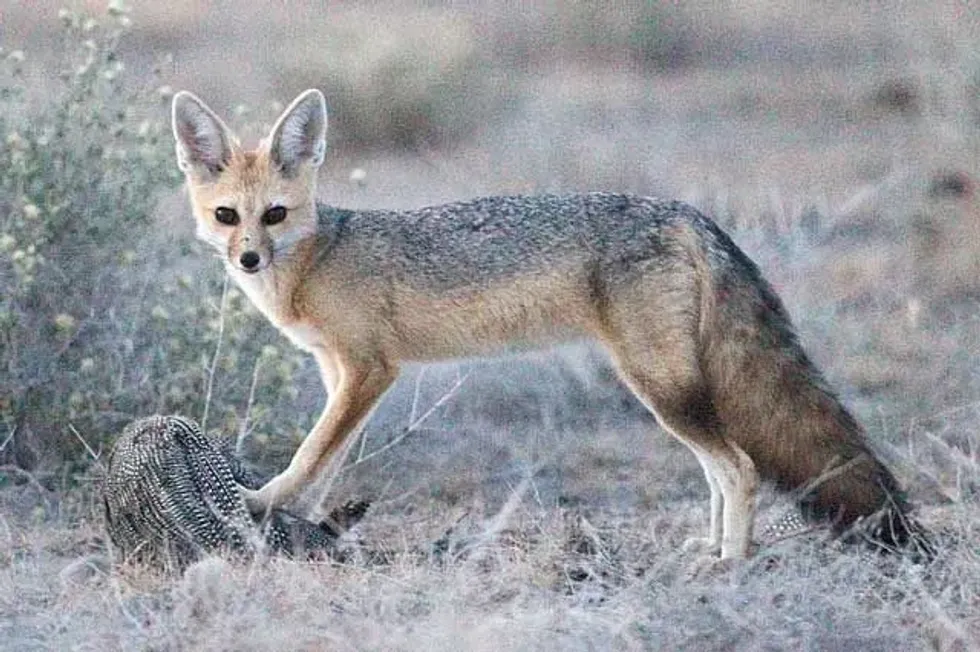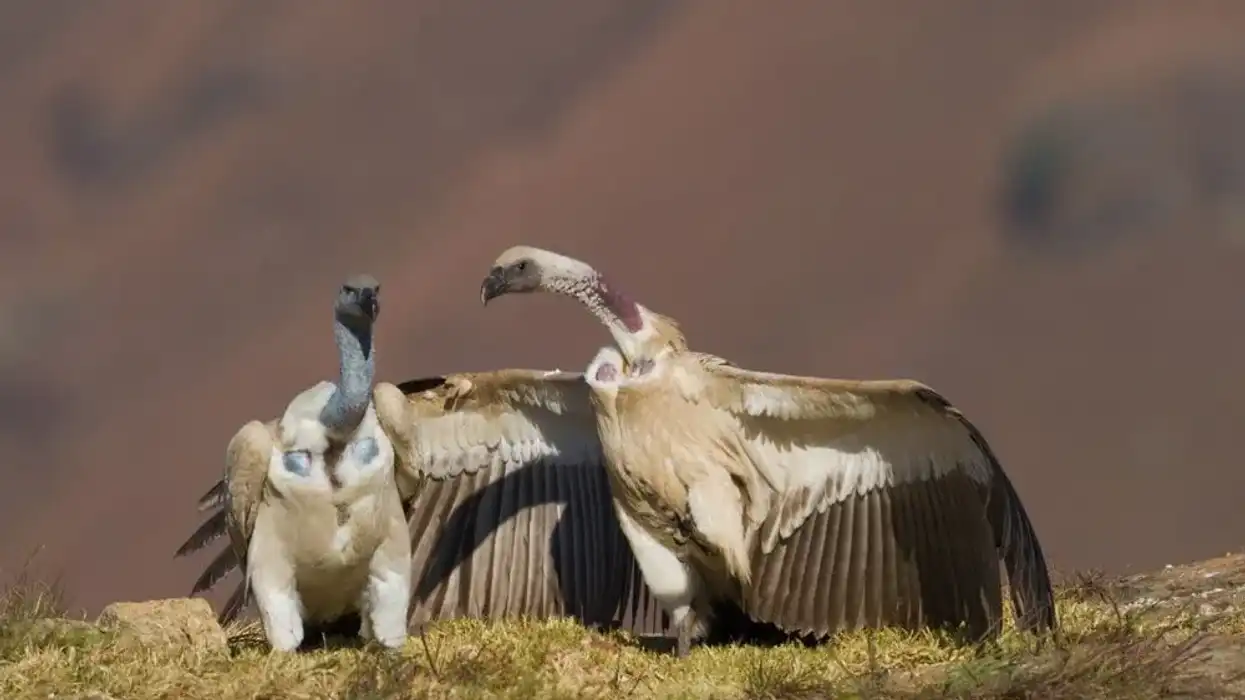The Cape fox is a small fox that is native to Africa. It is the only member of the Vulpes species which is found below the equator in the southern tip of the continent.
It is also one of the smallest members of the Canidae family. The Cape fox is a protected species under various lists of protected and threatened animals according to the national governments of many African countries.
For example, there have been national efforts in Swaziland to protect this animal through the National Nhlangano Nature Reserve.
The growth of arable land in many countries has also led to an increase in this animal's range. However, it is still killed in many areas as a vermin animal because it hunts down livestock that is kept for farming purposes.
The Cape fox is also known as the cama fox, asse, or the silver-backed fox due to its unique silver-colored pelage. The Cape fox is also considered to be quite similar in features and characteristics to another native African fox called the Fennec fox.
Keep reading for more amazing facts about Cape Fox. If you liked this article with great Cape Fox facts, also check out our other articles with fascinating facts about the pademelon and the Border Terrier.
Cape Fox Interesting Facts
What type of animal is a Cape fox?
A Cape fox (Vulpes chama) is a type of fox.
What class of animal does a Cape fox belong to?
A Cape fox (Vulpes chama) belongs to the Mammalia class of animals and the family of Canidae.
How many Cape foxes are there in the world?
The exact population of the Cape fox (Vulpes chama) is not known as they are dispersed throughout a wide range. However, scientists and researchers consider the population of this species to be quite stable and do not think that they are in immediate danger of extinction.
It is estimated that there are over 31,000 Cape foxes at least in the world.
Where does a Cape fox live?
Cape foxes are typically found in the sub-Saharan African desert. Their usual range is around the southern tip of Africa and they can be found in the countries of South Africa, Namibia, Natal, Botswana, and Transvaal.
What is Cape Fox's habitat?
The Cape fox prefers their native habitat of arid savannas. They typically avoid dense forests and can also be found in semi-desert scrub habitats.
Who does a Cape fox live with?
The social organization of Cape Fox is not well known. They are mostly solitary animals and even though they may form pairs during the breeding season, the male and the female will forage separately. They may sometimes gather together in a group to feed. Cape foxes are not territorial and there are overlaps in their home range.
How long does a Cape fox live?
The average lifespan of a Cape fox is six to 10 years in the wild.
How do they reproduce?
Cape foxes are monogamous animals and their breeding season comes in spring. Males and females form mating pairs after attaining sexual maturity.
After a gestation period of 51-52 days, the female gives birth to between one and six young pups in a litter. These animals have one litter per year and the pups are mostly born between September and November.
Males provide for the females for two weeks after the females give birth and both parents look after the young in the initial days.
The pups start to roam around and forage when they are four months old and become completely independent when they are five months old. Cape foxes reach sexual maturity in nine months.
What is their conservation status?
The International Union for Conservation of Nature (IUCN) has currently listed the Cape fox as Least Concern. It does not seem that the population of the species is declining or under threat of extinction.
Cape Fox Fun Facts
What do Cape Foxes look like?
The ears of the Cape fox are large and sharp while its muzzle is small and pointed. The color of their body varies between reddish-brown, dark brown, silver-gray, and tawny.
There are silver or white marks on the throat of the animal. The tail of this animal is quite dense and thick with a brown or black tip. After attaining maturity, the tip of the tail of the Cape fox is always black.
The body pelage of the Cape fox is quite soft and has a thick underfur. The underfur is covered by guard hair and they molt during October and November.
How cute are they?
Cape foxes are quite cute due to their small, pointed faces and big ears, and of course, their young cubs are adorable. However, they are not known to be friendly with humans so it is best to maintain a safe distance from them.
How do they communicate?
A Cape fox is not a very loud animal and mostly communicates through soft calls, whining, or chirping. Cape foxes are not known to howl but will growl and spit at their attacker when they perceive a threat.
They also bark loudly in a yelp or yapping manner when they are alarmed. Apart from vocal communication, the Cape fox also uses facial expressions and lifts their tail to show that they are excited.
How big is a Cape fox?
The average length of a Cape fox is approximately 17.7-24 in (45-61 cm) without the tail. The length of its tail varies between 12-15.5 in (30-40 cm).
The average height of this group of animals is 12-14 in (30-35 cm). A gaur, also known as the Indian bison, is almost 10 times the size of a Cape Fox as it is almost 177 in (4.5 m) in length!
How fast can a Cape fox run?
The speed of a Cape fox while running has not been recorded yet. However, the fennec fox, which belongs to the same genus as the Cape fox, runs at 20 mph (32 kph), so it can be assumed that the Cape Fox also has a similar speed even though they have short legs.
How much does a Cape fox weigh?
The average weight of a Cape fox is approximately 6.6-14.3 lb (3-6.5 kg).
What are the male and female names of the species?
There are no separate, unique names for a male and female Cape fox. However, male foxes are usually referred to as tods, reynards, or dogs. Female foxes are referred to as vixens.
What would you call a baby Cape fox?
A baby Cape fox does not have a separate, distinct name. However, baby foxes are usually referred to as pups, cubs, or kits.
What do they eat?
Cape foxes are omnivorous and their diet mainly consists of small rodents, insects. They also eat small birds, small reptiles, and fruits including berries, roots, and seeds.
Cape foxes are opportunists and will eat almost anything it encounters in the desert as food if required. They are also noted to prey on yellow mongoose and steenbok as well as eat beetles and their larvae, birds, and their eggs for food.
Some Cape foxes also prey on livestock and kill them for food. Domestic sheep are one such example of livestock preyed on by this animal.
Are they poisonous?
According to scientific research, the Cape fox is not known to be poisonous or carry any poison that it uses on other animals or human beings.
Would they make a good pet?
Cape foxes would not make a good pet at all as they are essentially wild animals. They have an omnivorous diet and prefer to stay in their natural habitat and hunt for prey.
Did you know...
The pelt of the Cape fox is used to make a fox fur cape. Therefore, they have a business benefit and are sadly hunted for their fur.
Are foxes found in Africa?
Different types of foxes are found in Africa. These species are native to the continent and the sub-Saharan regions. Some native foxes include the Cape fox, the Fennec fox, and the bat-eared fox.
How has Cape Fox adapted to its environment?
The Cape fox has managed to adapt to its environment and habitat in the desert through various features. It is a nocturnal animal and as a result, it is active during the night.
During the daytime, they stay in their burrows or holes underground. The Cape fox is an active digger and will create its burrows.
The Cape fox also helps to regulate the population of small mammals in the desert by hunting them down. This impacts the flora and plants of the region which are mostly eaten by these small mammals.
Here at Kidadl, we have carefully created lots of interesting family-friendly animal facts for everyone to discover! For more relatable content, check out these serval facts and Asiatic black bear facts for kids.
You can even occupy yourself at home by coloring in one of our free printable cape fox coloring pages.










